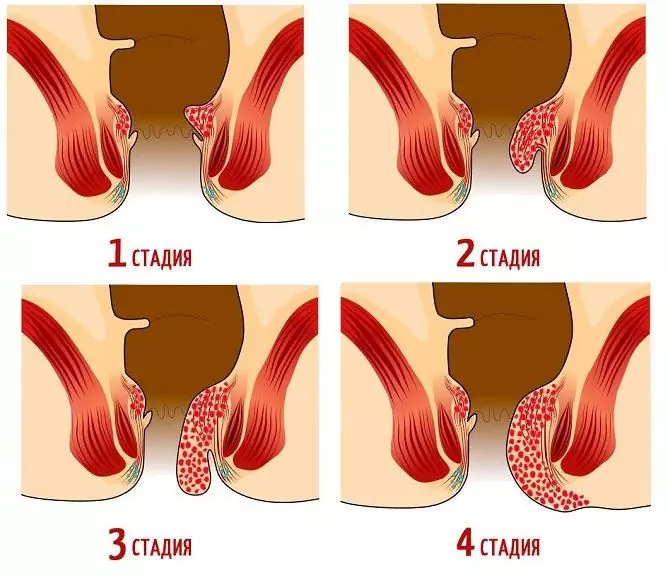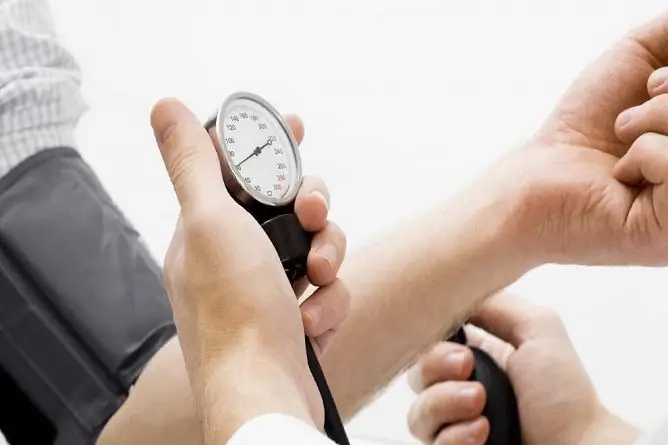- Author Rachel Wainwright [email protected].
- Public 2023-12-15 07:39.
- Last modified 2025-11-02 20:14.
Circulatory failure
Brief description of the disease
As you know, the main function of the circulatory apparatus is to provide organs and tissues with those products that they need for normal functioning, and at the same time to remove harmful substances from the body. Insufficiency of cerebral circulation or problems with the supply of blood to the heart occurs when the aforementioned apparatus ceases to cope with its tasks. In most cases, heart failure, that is, a complex of signs manifested in dysfunction of one or both ventricles of the heart, is the basis of disturbances in the normal blood supply.
Circulatory failure - disease classification

According to the severity of symptoms and the frequency of attacks, acute and chronic circulatory failure are distinguished. In the first case, the disease arises as a result of impaired contractility of the myocardium and manifests itself with very severe clinical symptoms: pulmonary edema, decompensated cor pulmonale and cardiogenic shock. Regardless of the clinical form, acute circulatory failure poses a serious threat to human life, therefore, the patient is shown an urgent correction of the condition that led to such severe complications.
Chronic circulatory failure is usually the result of the development of other diseases of the cardiovascular system. The pathology is again based on a violation of the contractile function of the ventricles. The reasons for this may be: postinfarction and atherosclerotic cardiosclerosis, lesions of the heart muscle in myocarditis, congenital defects, pericarditis and some other diseases. In the course of the development of pathology, the blood flow gradually slows down, under-oxidized products of metabolic processes accumulate, the acid-base balance shifts to the acidic side. If the treatment of circulatory failure is irregular and does not meet accepted standards, the patient experiences a progressive decline in the functions of all organs, which can be fatal.
Degrees of circulatory failure and symptoms specific to each stage
In modern medicine, it is customary to distinguish three stages of the disease, which are determined based on the severity of symptoms, patient complaints and the results of clinical studies. In addition, when making the final diagnosis, the severity of the manifestations of the underlying disease that led to circulatory failure is taken into account.
- Stage I - initial - patients complain of poor sleep, rapid fatigue, palpitations. An abnormally high heart rate and shortness of breath appear even after minor physical exertion. All signs of the underlying heart disease are noted;
- Stage II - developing circulatory failure - the symptoms are much more pronounced: the size of the heart increases, there is constant tachycardia, shortness of breath appears much faster. In addition, in patients, the feet and legs swell, urine flow decreases, and the liver increases in size. Appropriate treatment of circulatory failure and adherence to bed rest will significantly reduce the severity of symptoms, but they will never disappear completely (in contrast to patients with degree I);
- Stage III - advanced chronic circulatory failure - shortness of breath is noted even at rest, cyanosis intensifies, and severe edema appears. The pathology is so progressing that patients can only sleep in a characteristic semi-sitting position. Patients have numerous bouts of nausea, a sharp drop in appetite, a decrease in muscle mass, and a significant increase in the size of the heart. At the III degree of circulatory insufficiency, emergency treatment is necessary, since the patient may die from the growing symptoms of the disease.
Treatment of circulatory failure and caring for sick people

Patients are assigned a set of measures that help to reduce the load on the cardiovascular system and make it possible to create optimal living conditions to maintain the normal life of people. Depending on the degree of circulatory failure, patients are shown various medications designed to restore water-salt metabolism and the work of the heart muscle.
If a person is diagnosed with I degree circulatory insufficiency, a person can engage in physical education and sports disciplines that do not require significant stress. In the presence of stage II of the disease, hard physical work and sports are excluded. In the event that chronic circulatory failure of the III degree develops, the patient is shown a semi-bed rest, full sleep and a complete rejection of any physical activity. Regardless of the stage, patients should limit the consumption of table salt, as well as completely exclude from the diet those foods that stimulate the heart - coffee, strong tea.
Drug therapy helps to enhance the contractile function of the heart and the timely removal of excess water from the body. Patients with circulatory insufficiency are prescribed cardiac glycosides, digitalis preparations (digoxin, izolanide), strophanthin and korglikon in case of exacerbations of the disease. To remove excess water, it is advisable to use diuretics, but their dosage must be coordinated with the attending physician. Among other things, optimal conditions must be created in those rooms where the sick person spends most of the time. This applies to both temperature balance (20-22 degrees Celsius) and humidity. The air should not be too dry. Damp sheets can be hung in the living room to absorb excess heat.
YouTube video related to the article:
The information is generalized and provided for informational purposes only. At the first sign of illness, see your doctor. Self-medication is hazardous to health!






